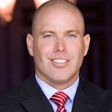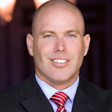Why the Typical Retirement Withdrawal Strategy Is Wrong
Many people have financial situations that call for a unique approach to withdrawing retirement savings.

Check out any website that offers retirement advice, and you're likely to come across the same suggested sequence for financial distributions: First, take from any taxable accounts; then tax-deferred; then tax-exempt.
That's the typical withdrawal strategy. That's conventional wisdom.
And, in my opinion, it's wrong. Or at least, it's wrong for many people.
From just $107.88 $24.99 for Kiplinger Personal Finance
Become a smarter, better informed investor. Subscribe from just $107.88 $24.99, plus get up to 4 Special Issues

Sign up for Kiplinger’s Free Newsletters
Profit and prosper with the best of expert advice on investing, taxes, retirement, personal finance and more - straight to your e-mail.
Profit and prosper with the best of expert advice - straight to your e-mail.
For example, there’s a misconception that when you’re older, you’re going to be in a lower tax bracket than during your working years. That’s often not the case.
How the tax picture darkens for retirees
People are told to hold off taking their tax-deferred money as long as possible, but at 70, they must start taking Social Security distributions, which are taxable. You probably have a 401(k), pension or traditional IRA you must begin taking required minimum distributions from, and those are taxable. All this taxable income can increase your overall tax bracket — often making it higher than it was during your working years.
Meanwhile, by this age, many people have paid off their home mortgage. They are no longer itemizing on their tax return; they’re taking the standard deduction. Or one spouse dies and the survivor goes from filing jointly to filing single status, losing a standard deduction and a personal exemption. Again, their income could be lower than ever, but their tax bracket may actually be higher.
A holistic approach is needed
The optimum strategy is to fill your tax bracket, but not bump up to the next. So you have to project out: What will your tax bracket be for the rest or your life? Then, go back and start over, looking at different formulas and distribution sequences.
All that takes deliberate, forward planning — steering a straight path onto the retirement runway in your 60s, before you turn 70.
This holistic approach takes time and a team of planners, CPAs and estate-planning attorneys working together.
Not everyone wants to take that kind of time or do that much analysis. The aforementioned typical withdrawal strategy is popular with financial advisers, I think, because it’s easy. Many firms are working with a business model that depends on hiring salespeople. They don’t want people who plan as much as they want people who can gather assets.
Unfortunately, those good salespeople aren’t necessarily well trained, technically, and they tend to be less focused on the details. So instead of working their way through an individualized, long-range plan for a client, they come up with simplified rules and broad-based solutions that allow them to meet with as many people as possible and ultimately sell as opposed to strategize.
But retirement planning isn’t about one simple set of answers; it requires running a lot of different scenarios to identify the best possible way to reduce taxes, optimize income and reduce risk. It’s more like a Rubik’s Cube: You can solve the blue side, but you may still have a problem with the orange.
A different kind of expertise
I believe that puzzle requires a special kind of adviser: a fiduciary who focuses only on retirement planning.
This is another place where a lot of people go wrong. They think the adviser who helped them accumulate their wealth is the right one to help them distribute it. But the planning is very different.
When you’re young and accumulating wealth, you make most of your financial decisions in a vacuum or in isolation. Many have a bunch of pieces: a pension, a 401(k), IRAs, Roth IRAs, life insurance, disability insurance, long-term-care insurance, real estate, Social Security and maybe some savings or some stocks and bonds.
In retirement, you need someone who can help put those pieces of your retirement puzzle together and make them work for you. Distribution planning is all about strategically taking from the right accounts at the right time — and one strategy does not fit all. The right adviser for you will give you the best answers — not just the easiest ones — for your retirement years.
Profit and prosper with the best of Kiplinger's advice on investing, taxes, retirement, personal finance and much more. Delivered daily. Enter your email in the box and click Sign Me Up.

Kirk Cassidy is president of Senior Planning Advisors and Strategic Investment Advisors. Cassidy is an Investment Adviser Representative and a fiduciary with a Series 65 securities license and life insurance licenses. He is a national speaker who teaches retirement planning in a university setting.
-
 Should You Renew Your CD?
Should You Renew Your CD?With rate cuts impacting earnings, we examine if now is a wise time to renew CDs.
-
 7 Ways to Plan Now to Save on Medicare IRMAA Surcharges Later
7 Ways to Plan Now to Save on Medicare IRMAA Surcharges LaterUnderstand the critical two-year lookback period and why aggressive planning before you enroll in Medicare is the most effective way to minimize IRMAA.
-
 Law Reversal Looming? Trump Eyes 2026 Gambling Winnings Tax Change
Law Reversal Looming? Trump Eyes 2026 Gambling Winnings Tax ChangeTax Deductions It's no secret that the IRS is coming after your gambling winnings in 2026. But how long will that last?
-
 Your Year-End Tax and Estate Planning Review Just Got Urgent
Your Year-End Tax and Estate Planning Review Just Got UrgentChanging tax rules and falling interest rates mean financial planning is more important than ever as 2025 ends. There's still time to make these five key moves.
-
 What Makes This Business So Successful? We Find Out From the Founder's Kids
What Makes This Business So Successful? We Find Out From the Founder's KidsThe children of Morgan Clayton share how their father's wisdom, life experience and caring nature have turned their family business into a respected powerhouse.
-
 Past Performance Is Not Indicative of Your Financial Adviser's Expertise
Past Performance Is Not Indicative of Your Financial Adviser's ExpertiseMany people find a financial adviser by searching online or asking for referrals from friends or family. This can actually end up costing you big-time.
-
 I'm a Financial Planner: If You're Not Doing Roth Conversions, You Need to Read This
I'm a Financial Planner: If You're Not Doing Roth Conversions, You Need to Read ThisRoth conversions and other Roth strategies can be complex, but don't dismiss these tax planning tools outright. They could really work for you and your heirs.
-
 Could Traditional Retirement Expectations Be Killing Us? A Retirement Psychologist Makes the Case
Could Traditional Retirement Expectations Be Killing Us? A Retirement Psychologist Makes the CaseA retirement psychologist makes the case: A fulfilling retirement begins with a blueprint for living, rather than simply the accumulation of a large nest egg.
-
 I'm a Financial Adviser: This Is How You Can Adapt to Social Security Uncertainty
I'm a Financial Adviser: This Is How You Can Adapt to Social Security UncertaintyRather than letting the unknowns make you anxious, focus on building a flexible income strategy that can adapt to possible future Social Security changes.
-
 I'm a Financial Planner for Millionaires: Here's How to Give Your Kids Cash Gifts Without Triggering IRS Paperwork
I'm a Financial Planner for Millionaires: Here's How to Give Your Kids Cash Gifts Without Triggering IRS PaperworkMost people can gift large sums without paying tax or filing a return, especially by structuring gifts across two tax years or splitting gifts with a spouse.
-
 'Boomer Candy' Investments Might Seem Sweet, But They Can Have a Sour Aftertaste
'Boomer Candy' Investments Might Seem Sweet, But They Can Have a Sour AftertasteProducts such as index annuities, structured notes and buffered ETFs might seem appealing, but sometimes they can rob you of flexibility and trap your capital.